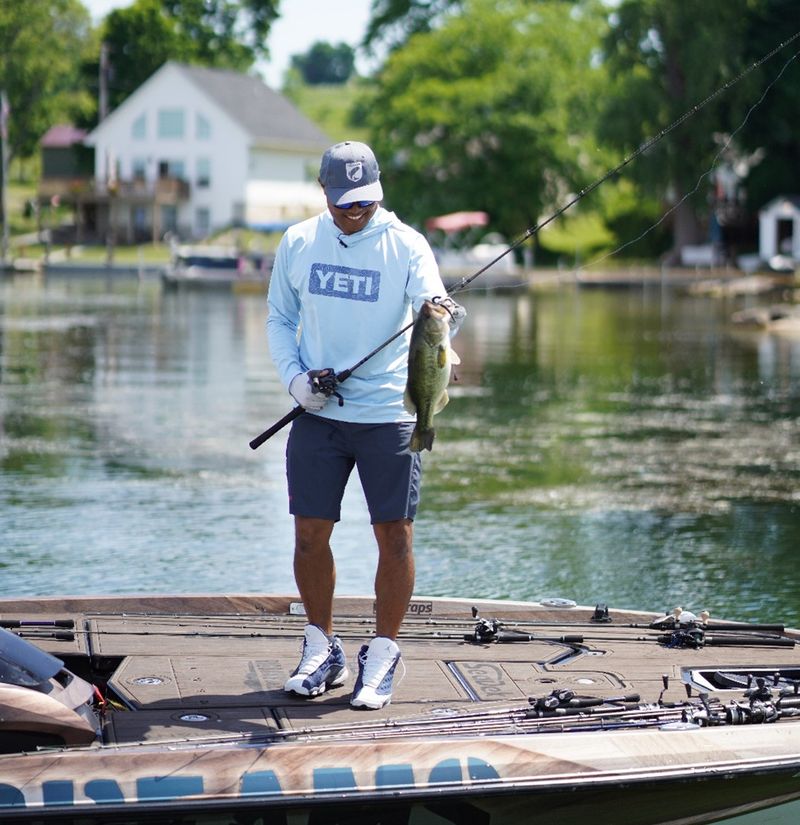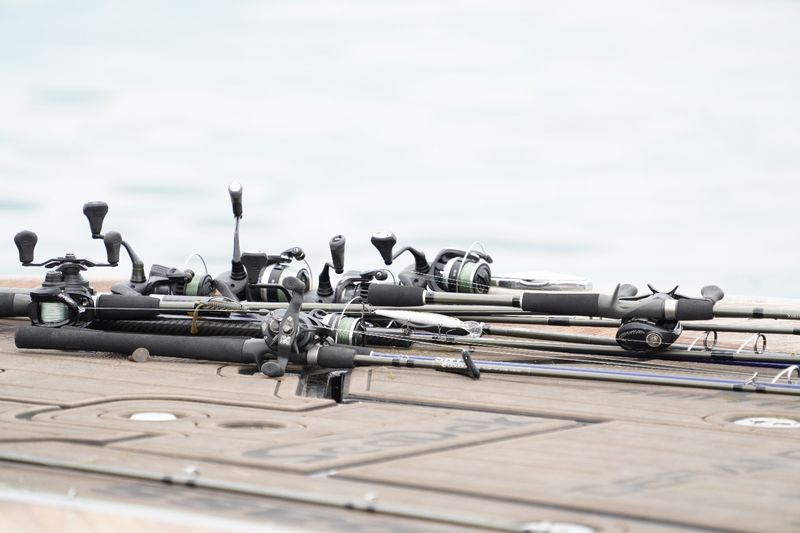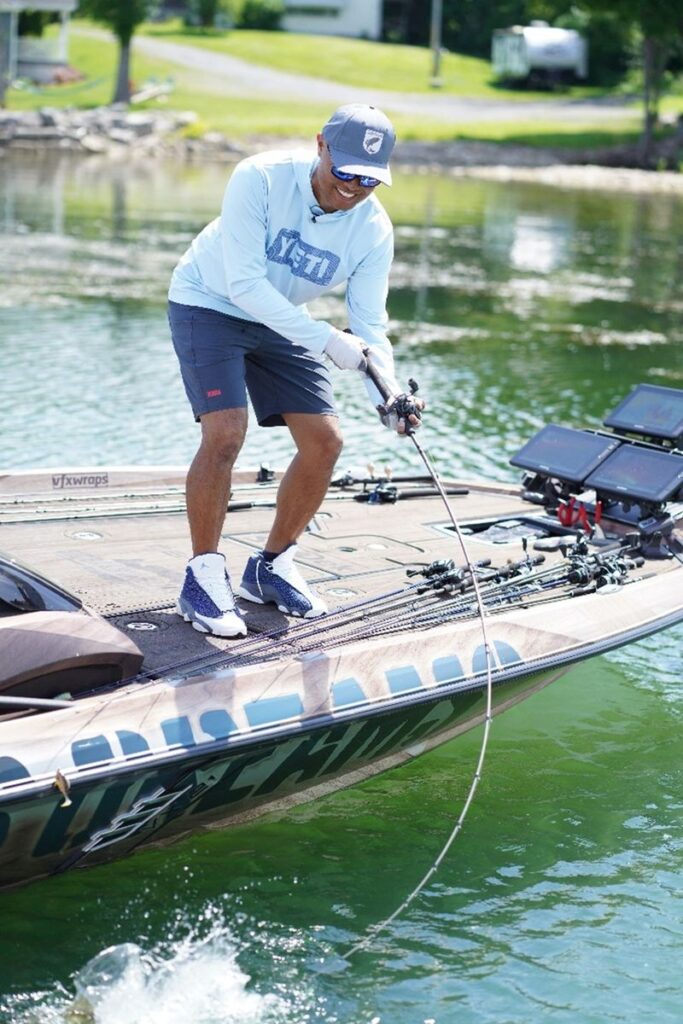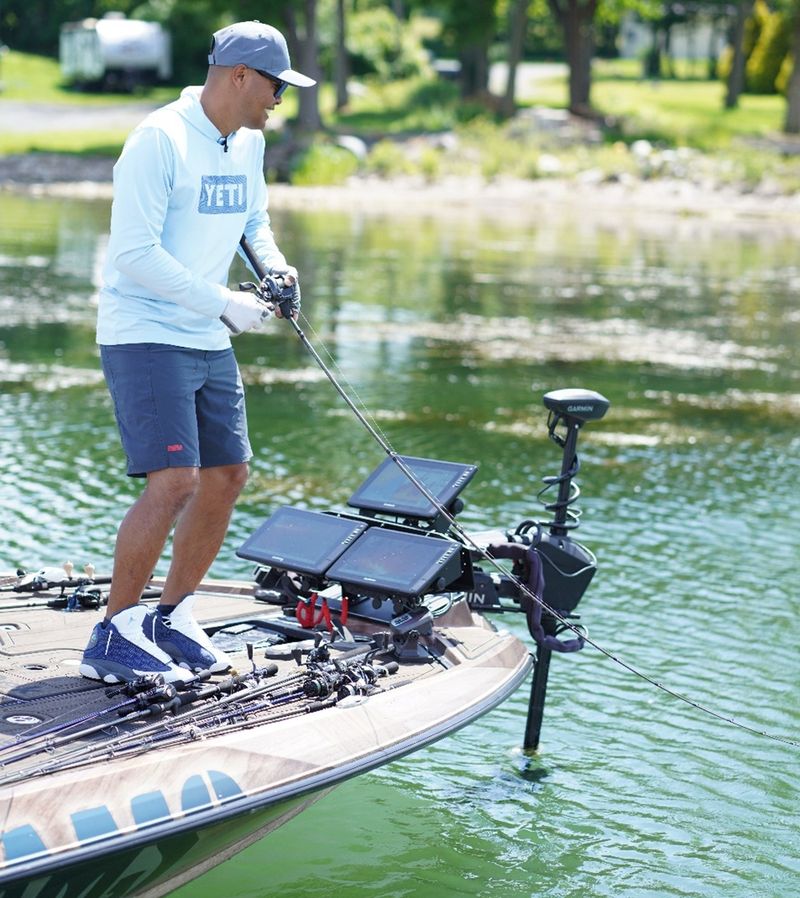Author: Ethan Hall

If you’ve been reading any tournament fishing headlines in recent years, then you probably already know that jerkbaits have made a strong resurgence in competitive bass circuits across the country. In fact, the recent Bassmaster Classic winner just won primarily using jerkbait! With the advent of forward-facing sonar, the capabilities of these baitfish imitators now go well beyond the classic cold-water applications for which they were historically known.
To maximize the effectiveness of a jerkbait throughout the year, a properly designed rod is essential for bringing these baits to life and there are a few key things to look for in your next jerkbait setup:
- A rod with a soft tip/mid-section
- A relatively short rod (6’6” – 7’2”)
- A line weight rating in the 8-14lb test range
- A lightweight rod setup

What Makes a Good Jerkbait Rod:
There are a lot of rods out there that will suffice for simply dragging a stick bait through the water but a great jerkbait rod will truly maximize the action of the bait and keep bass pinned once they’re hooked.
- A Soft Tip: A soft tip/mid-section is essential for making a bait “dance” as you execute your jerking cadence. Something with some “whip” will allow the bait to walk side to side with every twitch of the rod tip and will even throw a little slack in the line each time the bait is worked. A rod that is too stiff creates a dead action with a much narrower walking action. This soft action also absorbs energy on jumps and hard runs where bass are notorious for throwing treble hooks.
- A Short Rod: A “short rod” is a relative term. Someone who is 6’6” tall may consider a 7’2” rod short while someone who is 5’6” may opt for a 6’6” setup for this application. The key here is that the rod can be worked in a downward twitching motion without contacting the water surface.
- Line Weight Rating: Typical line weights for jerkbait fishing range from 8 – 14lb test; much less and you risk breaking fish off, much more and you start to hinder the action of the bait. Having a rod that is designed specifically for the line strength you intend to use is important in avoiding unnecessary breakoffs and maximizing bait action.
- Lightweight: Throwing a jerkbait all day can be fatiguing. High quality rods tend to utilize light weight components which, at the end of the day, can mean the difference between a sore wrist and staying on the water for several more hours.

Jerkbait Spinning Rod:
Don’t be fooled into thinking that jerkbaits can only be thrown on casting tackle. A properly selected spinning rod can be an excellent choice for throwing just about any jerkbait, but especially some of the smaller finesse options that require light line to optimize casting distance and bait action.
Some great options in this category would include:
Douglas LRS:
Douglas XMATRIX:

Douglas Casting Rods:
If you favor the more conventional casting rod route for throwing your jerkbaits this season, Douglas offers a variety of options for filling this void in your rod locker. Whether you prefer a budget friendly work horse or you’re a die-hard that will settle for nothing less than the Cadillac of jerkbait rods, Douglas has you covered.
The following would be our top picks:
Douglas LRS:
Douglas XMATRIX:
